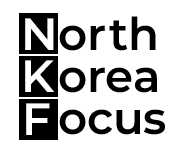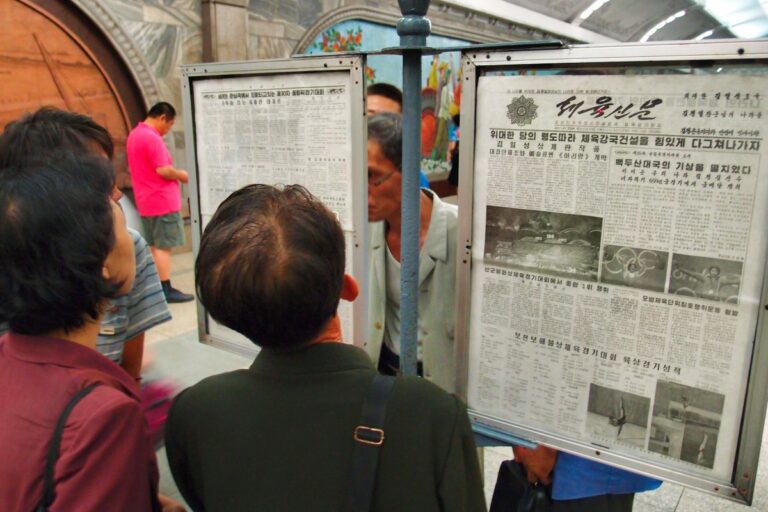North Korea boasts one of the most tightly controlled media environments globally, where freedom of speech and press, as stipulated in the constitution, is routinely disregarded in favor of government-approved narratives. An illustrative instance is the delayed disclosure of Kim Jong Il’s death, which remained undisclosed for two days.
Despite this rigid control, the landscape is witnessing subtle shifts with the advent of new technologies. State-run media outlets are gradually establishing an online presence, and mobile phone ownership has surged, reaching an estimated four million subscribers in 2022. Kang Shin-sam, a technology expert, notes that North Korea stands unparalleled in its monopoly and control over the internet and information.
International watchdogs, including Reporters Without Borders, consistently rank North Korea at the bottom of the Press Freedom Index. In the latest 2023 report, North Korea occupies the 180th slot, just below China.
The constitution ostensibly guarantees freedom of speech and the press through Article 67, yet the reality is starkly different. The media operates under strict state control, promoting a one-sided and exaggerated narrative that aligns with the ruling Workers’ Party of Korea. Journalists, all party members, face stringent ideological scrutiny, and deviation from the prescribed narrative can lead to severe consequences, including imprisonment or even execution.
The media in North Korea actively cultivates a cult of personality around the Kim family, praising their every move. Despite recent technological developments, approximately 90% of international news broadcasts are devoted to propagating the achievements of the Kim family, serving to shape the perception of North Koreans and limit their exposure to external realities.
Newspapers in North Korea
With 12 principal newspapers and 20 major periodicals published in Pyongyang, the North Korean press plays a crucial role in disseminating state-approved information. Foreign newspapers are notably absent from the streets of the capital, emphasising the insular nature of the media environment.
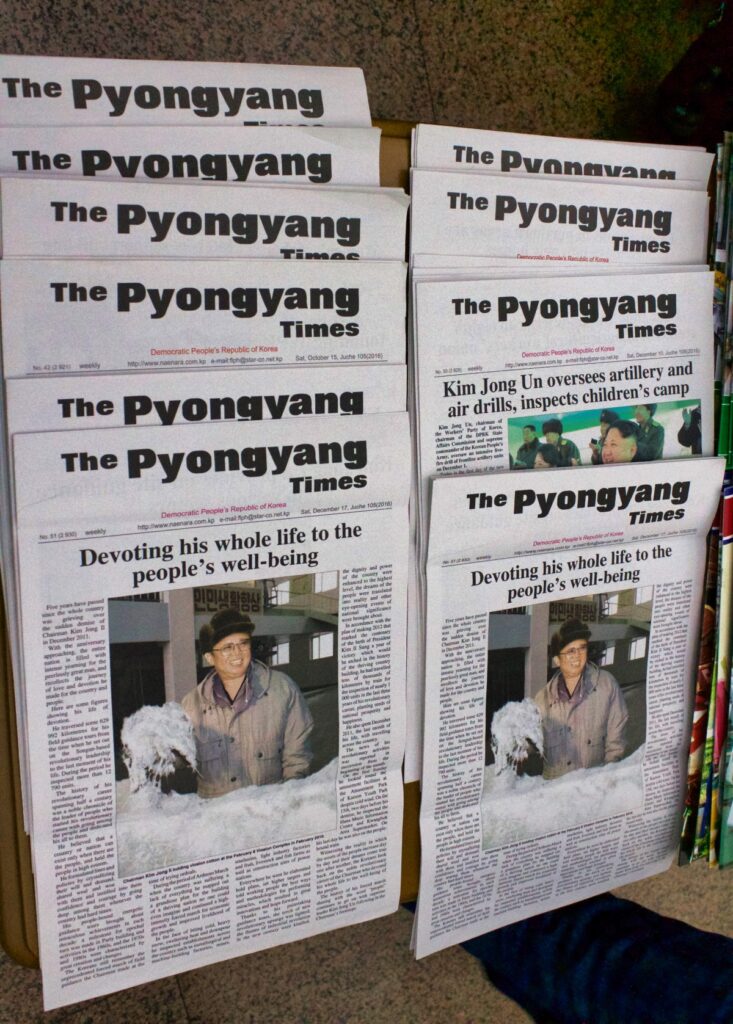
List of newspapers in North Korea
General
- Cheyuk Sinmun
- Choldo Sinmun (철도신문)
- Joson Inmingun (Korean People’s Army Daily) – Official newspaper of the Korean People’s Army
- Korean News Service (Chosun Tongsin,조선통신)
- Minju Choson (Democratic Korea) – Official newspaper of the Cabinet of North Korea and the Standing Committee of the Supreme People’s Assembly
- Nongup Kunroja
- Rodong Chongnyon (로동청년)
- Rodong Sinmun (Labour Daily) – The official organ of the Central Committee of the Workers’ Party of Korea. Considered a source of official North Korean viewpoints on many issues. In Korean and English.
- Rodongja Sinmun (Workers’ Newspaper) – Organ of the Central Committee of the General Federation of Trade Unions of Korea
- Kyowŏn Sinmun (교원신문) – Official journal of the Ministry of Education [ko] and the teachers’ union
- The Pyongyang Times – English-language, published in the capital
Teen and children magazines
- Saenal – For middle school students in the Socialist Patriotic Youth League.
- Sonyon Sinmun (소년신문) – For children from 7 to 13.
Published abroad
- Choson Sinbo – Official newspaper of the Chongryon
- Minjok Sibo
- Rimjingang (unofficial, private publication)
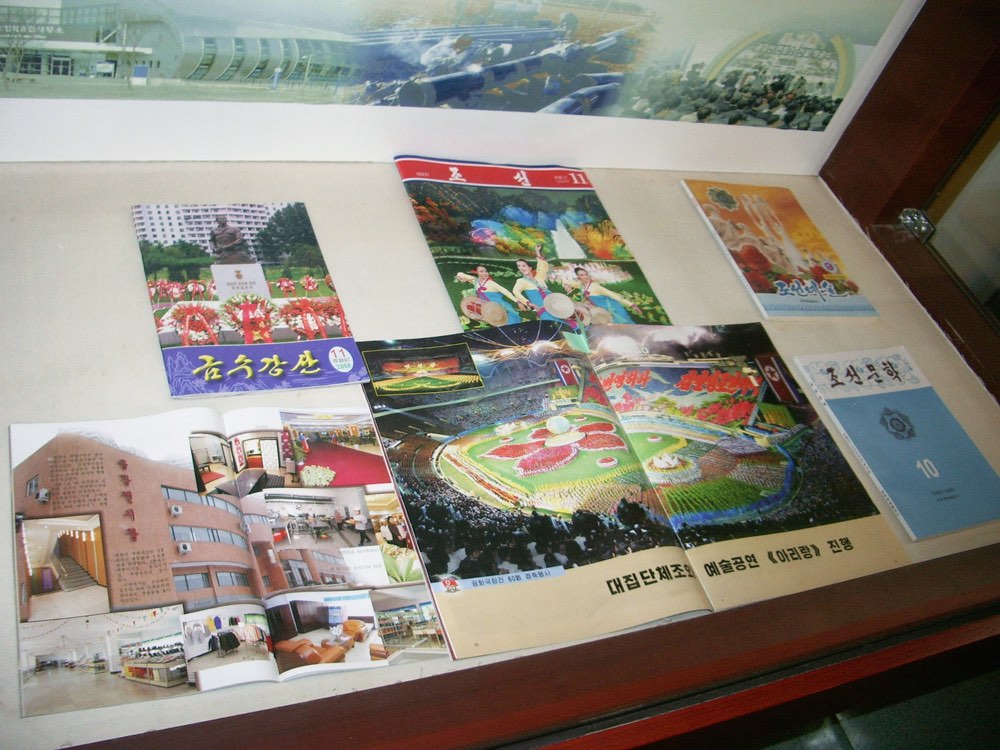
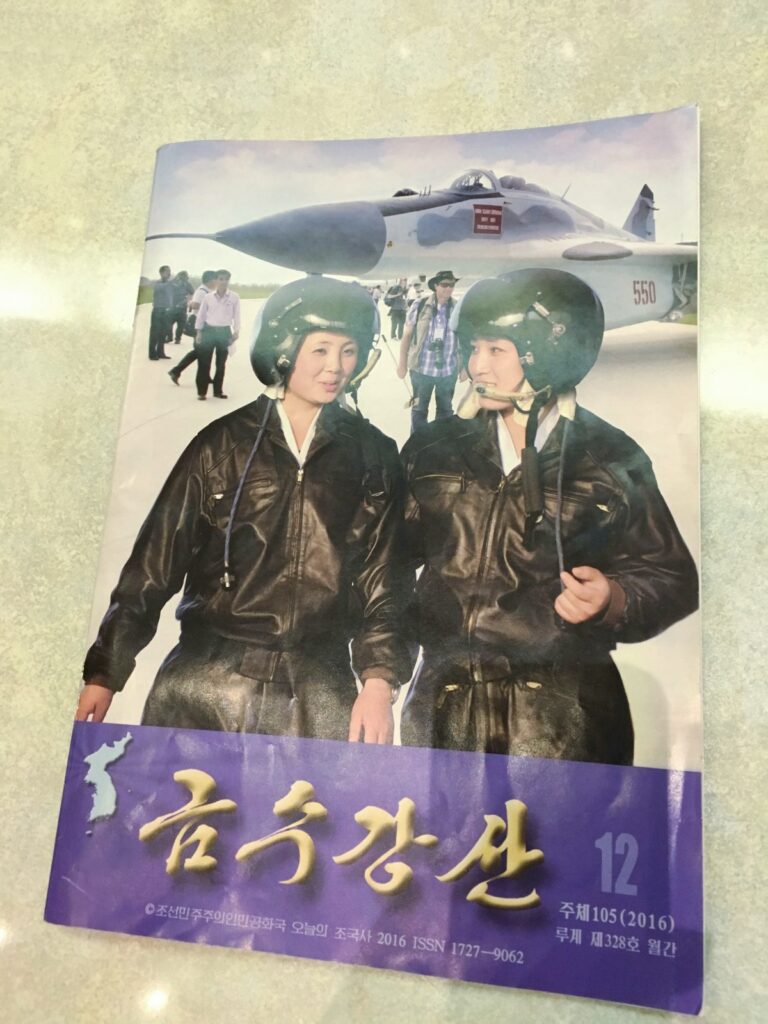
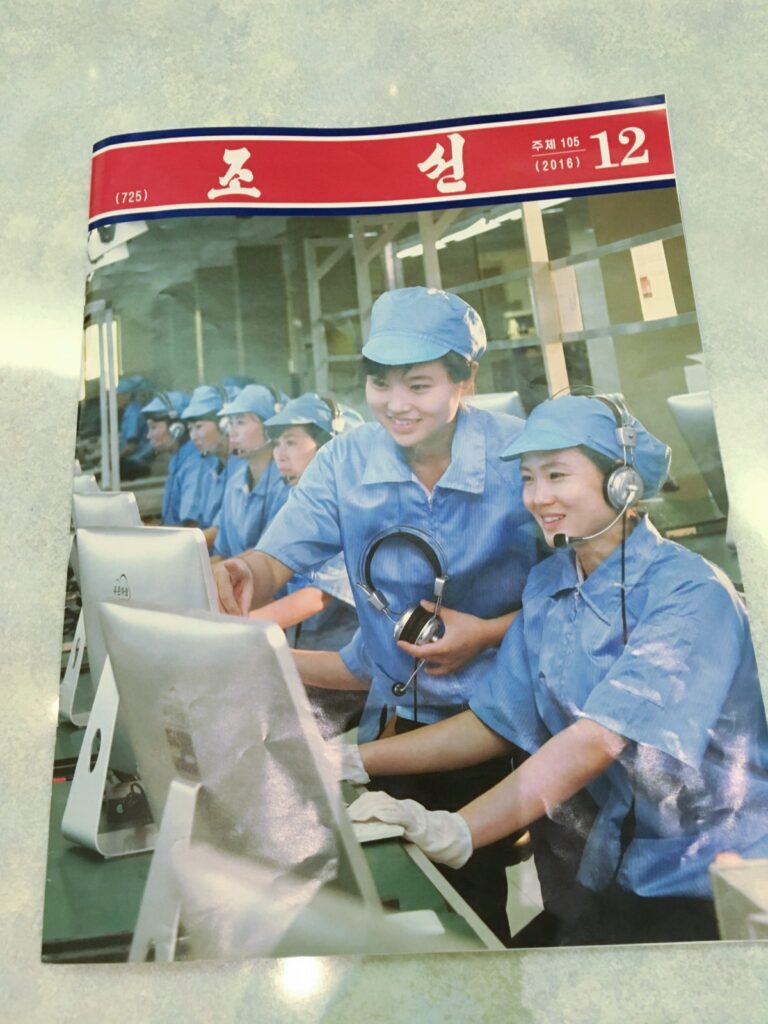
* Several newspaper journalists from North Korea were secretly trained in China to covertly report on events inside North Korea. November 2007 marked the first publication of the Rimjingang magazine, which is distributed secretly in North Korea and neighbouring countries. The magazine covers the economic and political situation in the country. The journalists have also provided footage of public executions to South Korean and Japanese media.
Television in North Korea
Television and radio, managed by the Central Broadcasting Committee of Korea, are powerful tools for promoting the regime’s ideologies. North Korean broadcasts are known for their showmanship, with newsreaders using distinctive tones to praise leaders and condemn perceived adversaries. Due to incompatibility issues, South Korean broadcasts cannot be received in North Korea, but defectors are increasingly streaming North Korean television online.
In 2017, a survey indicated that 98% of households possessed a television. As of 2020, television broadcasts are available in both traditional analog and newly introduced digital formats.
Technology
North Korean television employs the PAL 576i Systems D and K analog signal transmission system with a 4:3 aspect ratio. Until 1993, the country operated on the SECAM television system, also utilizing 576i at 4:3. The four main channels—Korean Central Television, Mansudae, Athletic Television, and Ryongnamsan—broadcast over the air and through a cable television system in Pyongyang. These channels are accessible via a dedicated app on the government-issued Samjiyon tablet computers and the Manbang IPTV service.
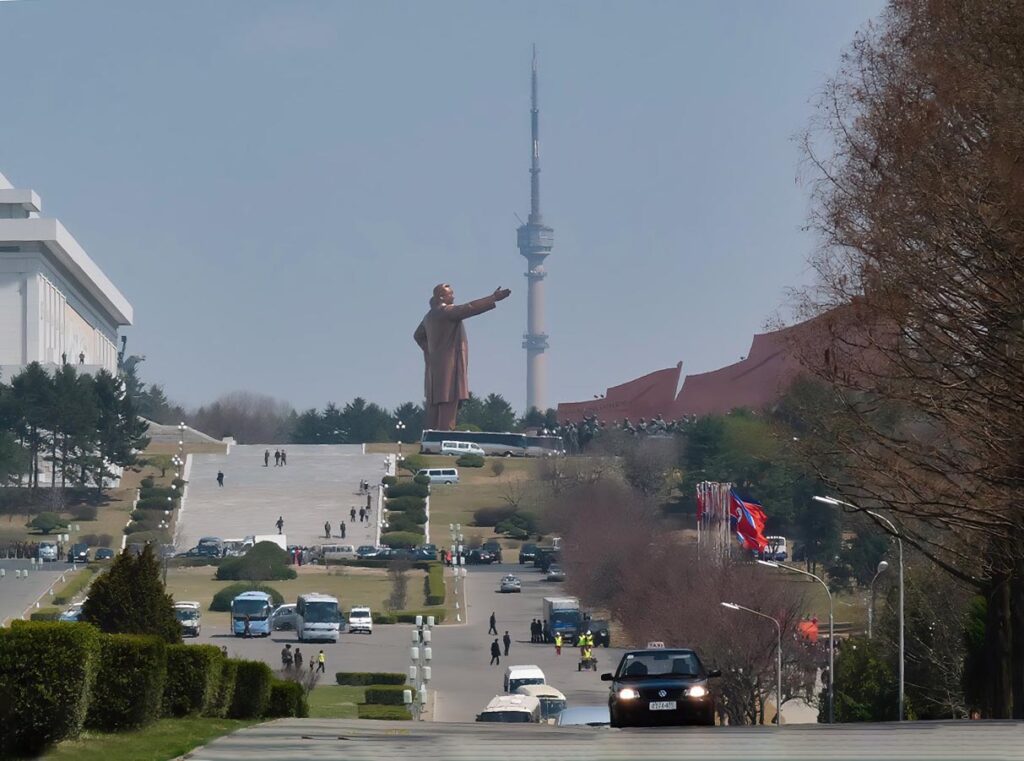
For Digital Terrestrial Television, North Korea utilizes DVB-T2, with trials initiated in 2012. As of 2020, various set-top box models were available, providing access to the four broadcast channels.
TV sets sold in North Korea are designed to operate solely on PAL and DVB-T2 systems to prevent reception of broadcasts from South Korea (using NTSC System M analog and ATSC digital) or China (using DTMB digital). Notably, TV sets can receive broadcasts from Russia, as they also use DVB-T2. Imported TV sets with PAL and NTSC capabilities, such as those from Japan, have their NTSC abilities disabled upon import by the government.
Content
Over the years, there has been a noticeable enhancement in the quality of content. International news is regularly featured, and the educational programming maintains a high standard. The broadcasting of documentaries is frequent, typically covering subjects such as health, Korean and world history, and geography. Notably, since 2012, there has been a marked improvement in the accuracy and timeliness of weather forecasting, addressing both climate change concerns and the economic repercussions of weather events.
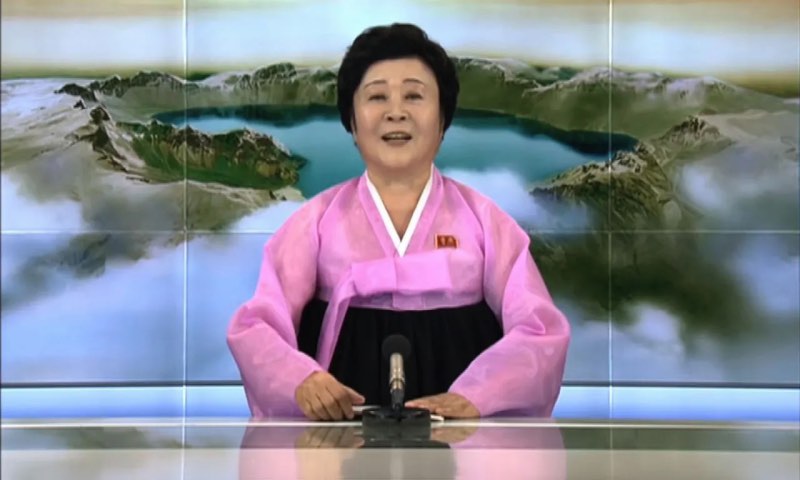

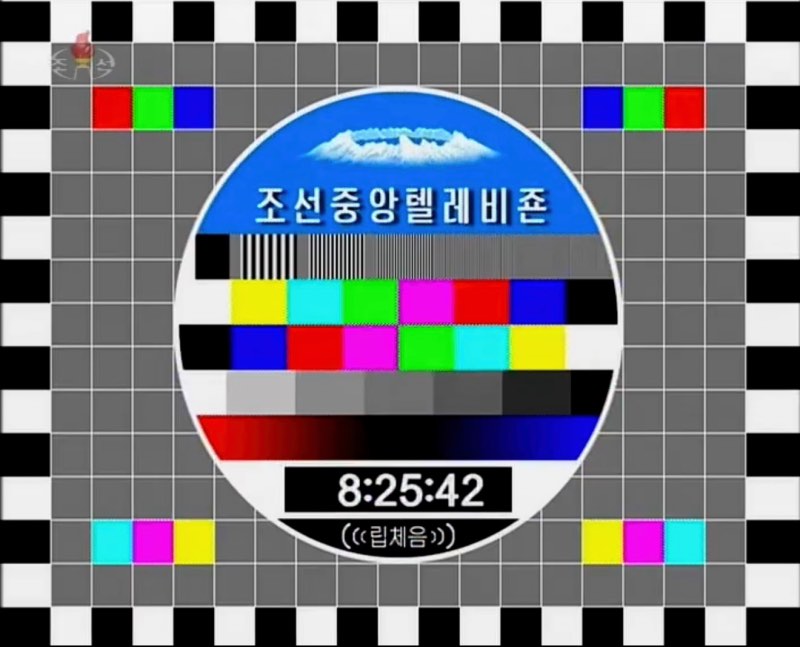
TV Channels in North Korea
As of August 16, 2016, North Korea boasts four state-owned television channels, operating from daytime to prime time.
- Korean Central Television (KCTV):
• Established in 1963, KCTV is the oldest and primary television channel in North Korea.
• It began regular broadcasting in 1963 and is the sole North Korean TV channel available internationally via satellite television and IPTV.
• KCTV broadcasts in both standard definition and Full HD, with a test air broadcast in the 16:9 SDTV format since December 4, 2017. - Mansudae Television:
• Opened on December 1, 1973, Mansudae Television focuses on educational content and occasionally features advertisements on weekends.
• The channel broadcasts for three hours on Saturdays (19:00–22:00) and nine hours on Sundays (10:00–13:00, 16:00–22:00). - Ryongnamsan Television:
• Formerly known as “Kaesong,” this educational channel, operated by the University Student TV Department of Korea Radio and Television, started broadcasting on April 1, 1971.
• It transitioned to color broadcasting on October 10, 1991, and was rebranded on February 1, 1997, as the “Korean Educational and Cultural Network.”
• The channel, now known as Ryongnamsan Television, offers science documentaries in English, television lectures, and educational programs for language learning.
• Available on Channel 9 in Pyongyang, the Manbang IPTV service, and Samjiyon tablets. - Athletic Television:
• Launched on August 15, 2015, Athletic Television is the sports channel in North Korea.
• It broadcasts sports competitions involving North Korean athletes, along with documentaries and programs on the history of sports in North Korea and globally.
• Athletic Television airs on Saturdays and Sundays from 19:00 to 22:00.
Online
Access to the internet in North Korea is heavily restricted, primarily confined to designated places for foreign tourists. The population relies on Kwangmyong, an intranet controlled by the government, with most internet traffic routed through China. Despite these controls, video games and other forms of media are gaining popularity, especially with the introduction of motion-based gaming systems.
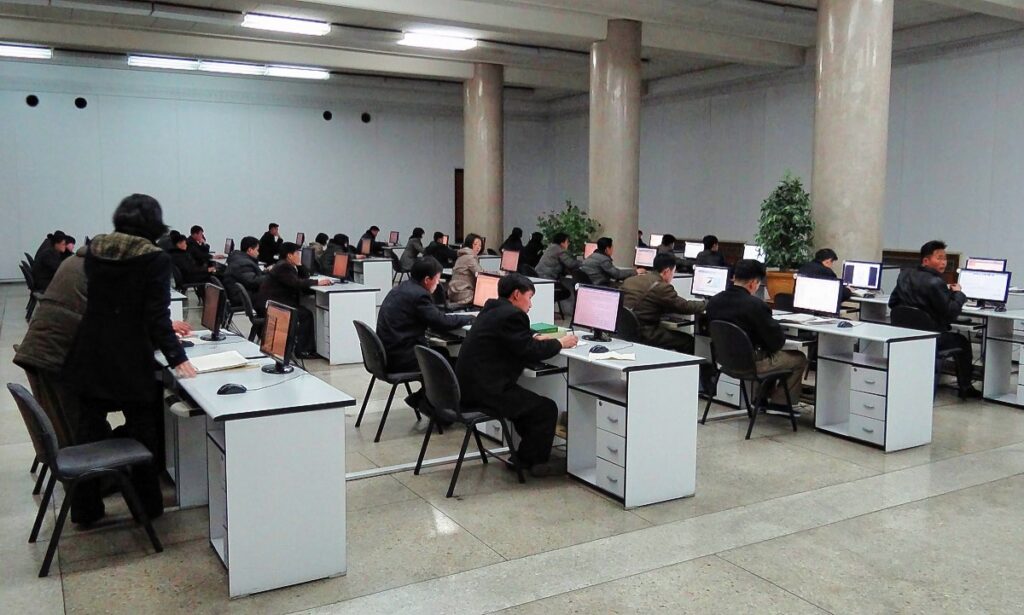
While North Korea maintains strict regulations and penalties for accessing foreign media, there is a growing trend, particularly among elite citizens, to seek information beyond state-approved sources. Radio, DVDs, and USB drives serve as common conduits for accessing foreign media, providing a glimpse into the outside world despite the regime’s efforts to control the narrative. Estimates suggest that around 92% of North Koreans access foreign media at least once a month, highlighting a subtle shift in information dynamics.
nkf.

